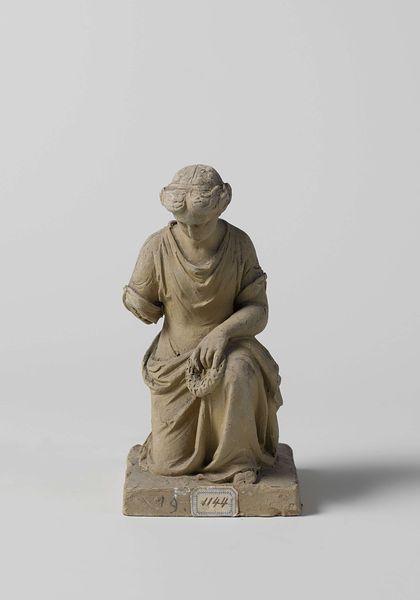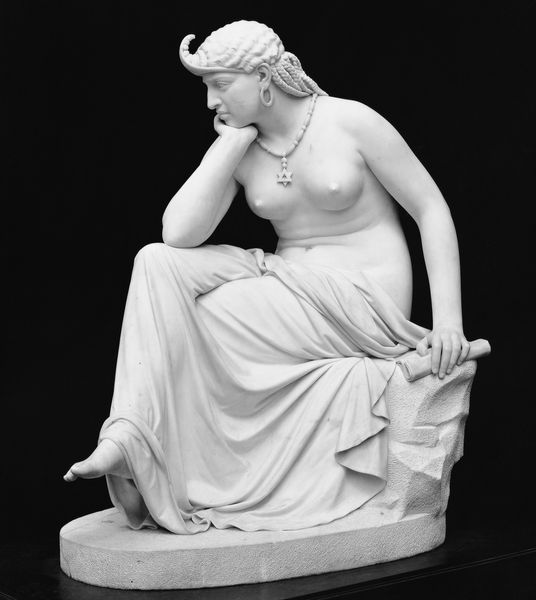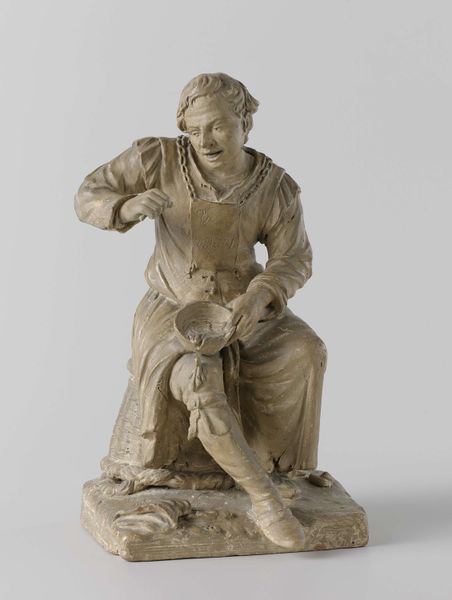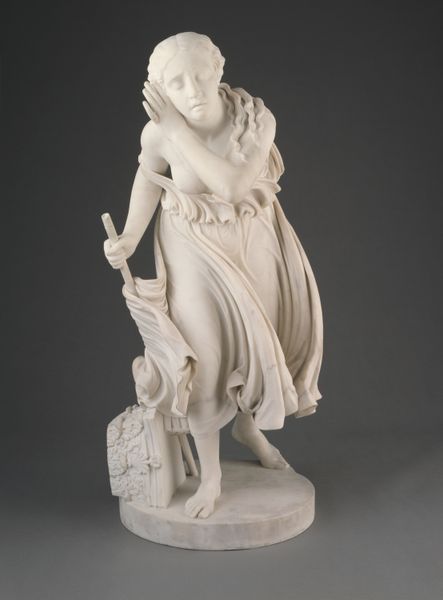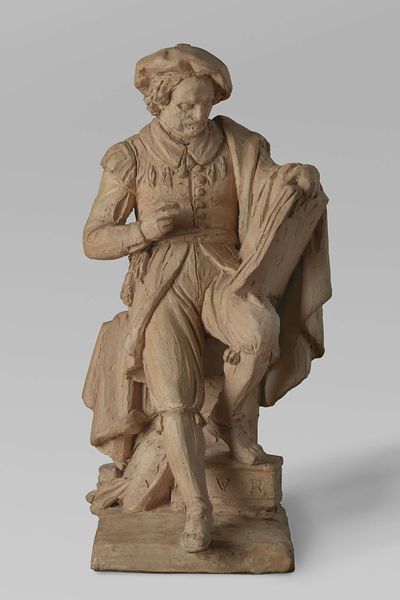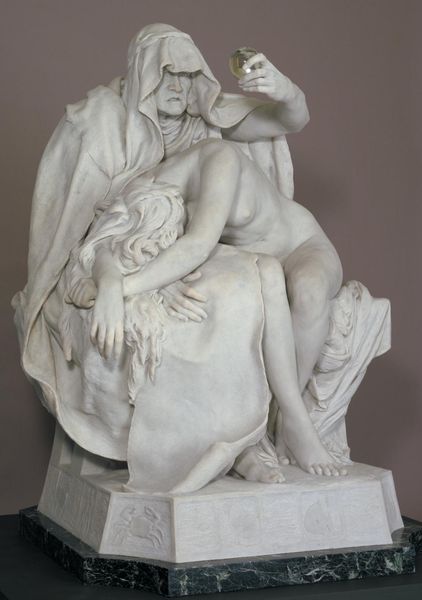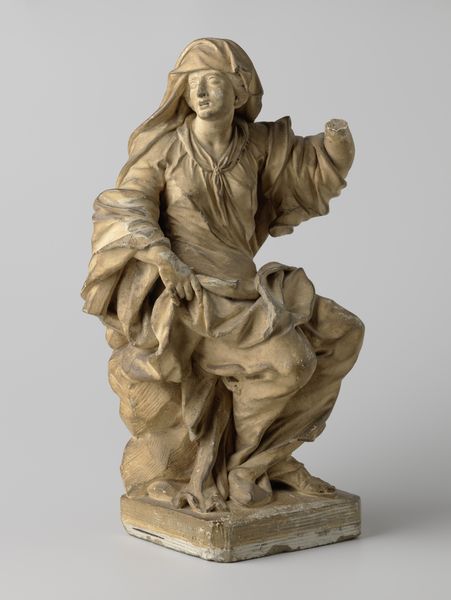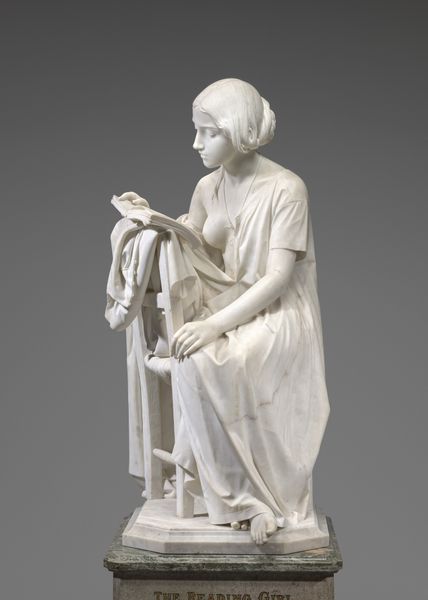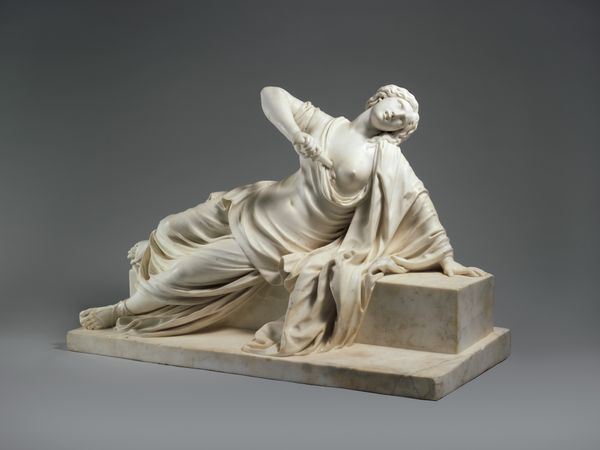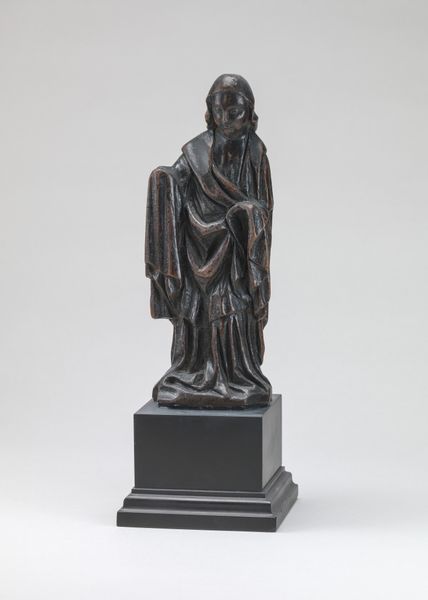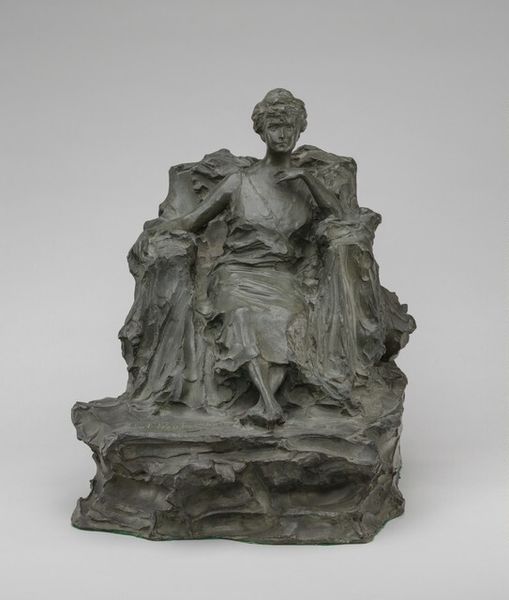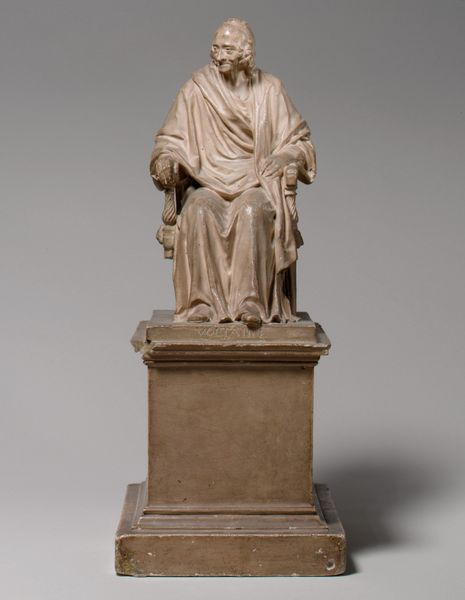
Dimensions: object: 1035 x 673 x 660 mm, 505kg
Copyright: CC-BY-NC-ND 4.0 DEED, Photo: Tate
Editor: This is "Mother Teaching Child" by Sir Alfred Gilbert. Looking at it, the cool smoothness of the marble really strikes me. What can you tell me about the materials used and what it communicates? Curator: The materiality speaks volumes. Gilbert chose marble, a material associated with luxury and permanence. But consider the labor involved. Its extraction, transport, and the sculptor's painstaking work. Editor: So the material both elevates and reveals the social context? Curator: Precisely. The sculpture presents a scene of domestic intimacy, yet its very existence relies on a complex network of labor and consumption. It makes you think about the Victorian ideals it represents, doesn't it? Editor: It does. I hadn't considered the economic context so explicitly. Curator: It’s crucial to look beyond the surface and consider the processes that bring art into being. Editor: Thank you. I'll definitely consider the production process in future interpretations.
Comments
tate 8 months ago
⋮
http://www.tate.org.uk/art/artworks/gilbert-mother-teaching-child-n04586
Join the conversation
Join millions of artists and users on Artera today and experience the ultimate creative platform.
tate 8 months ago
⋮
Mother Teaching Child is one of the few marble carvings Gilbert made in Rome, as he soon turned to modelling in clay to cast in bronze. He used his son Alfedo and his nurse as models. The group is partly based on an influential naturalistic sculpture of a mother and child made by the French sculptor Jules Dalou. Gilbert’s composition is also loosely based on Michelangelo and Raphael, linking past and present art. This sculpture was a private commission from Henry Doulton, owner of the Doulton Pottery, who visited Gilbert in Rome. Gallery label, February 2010
